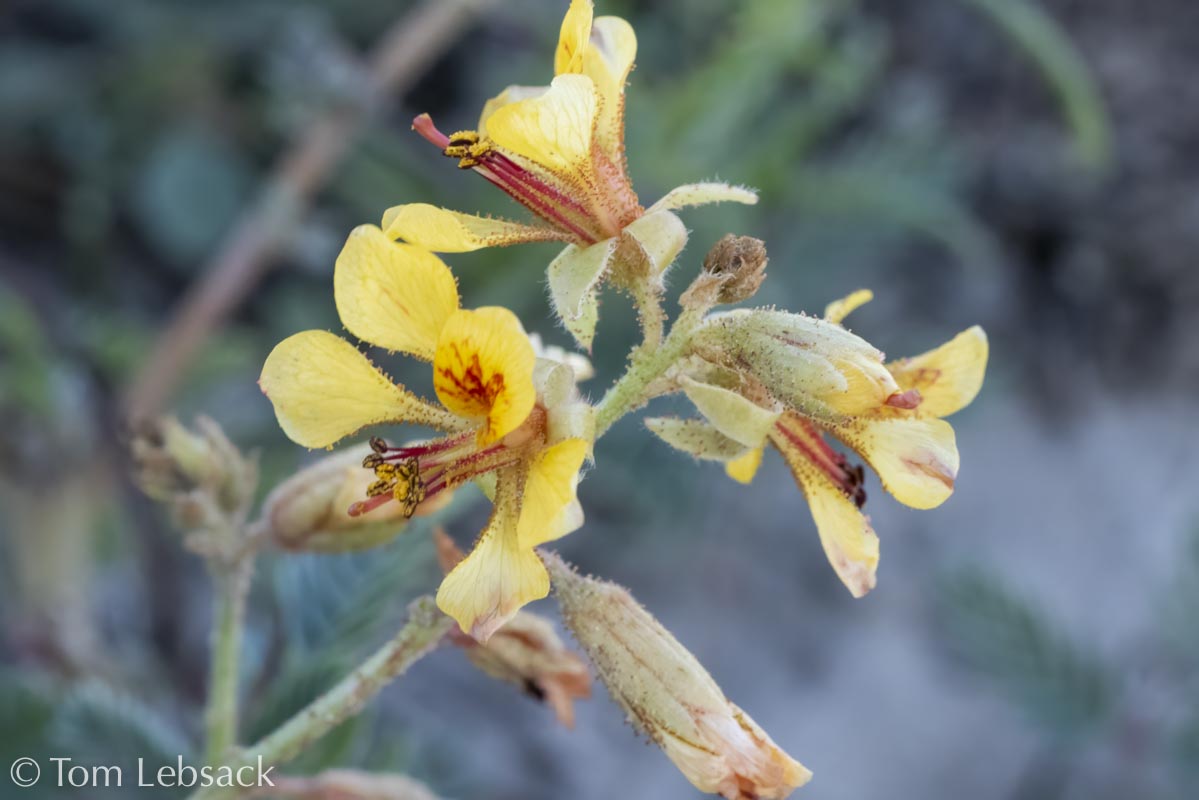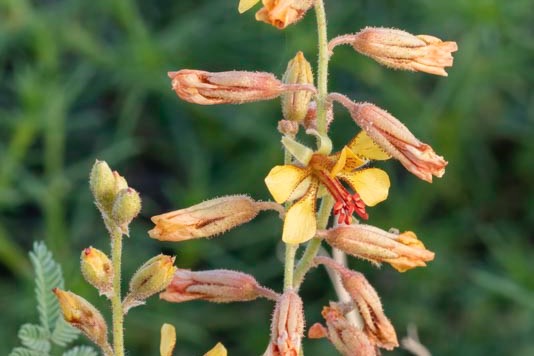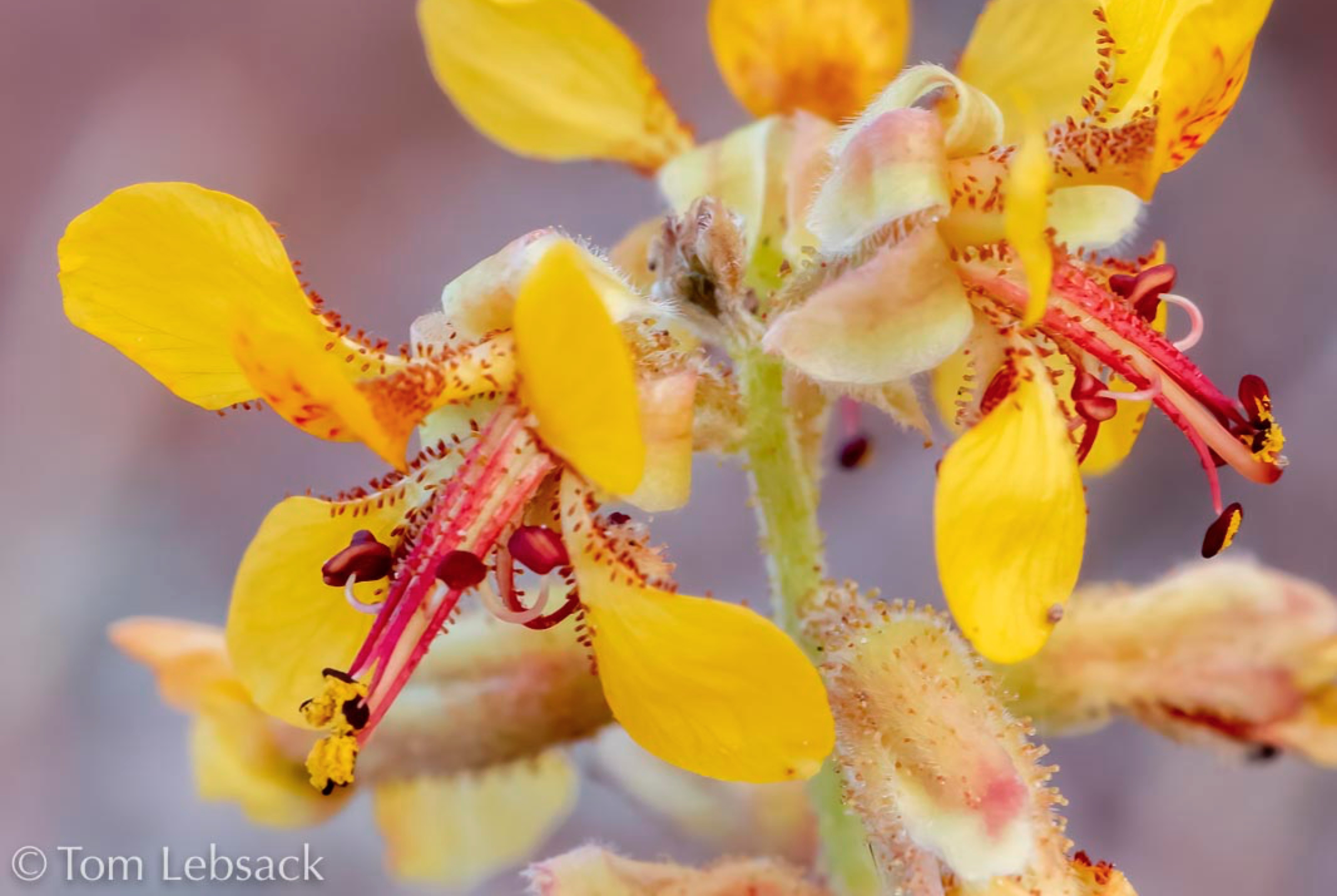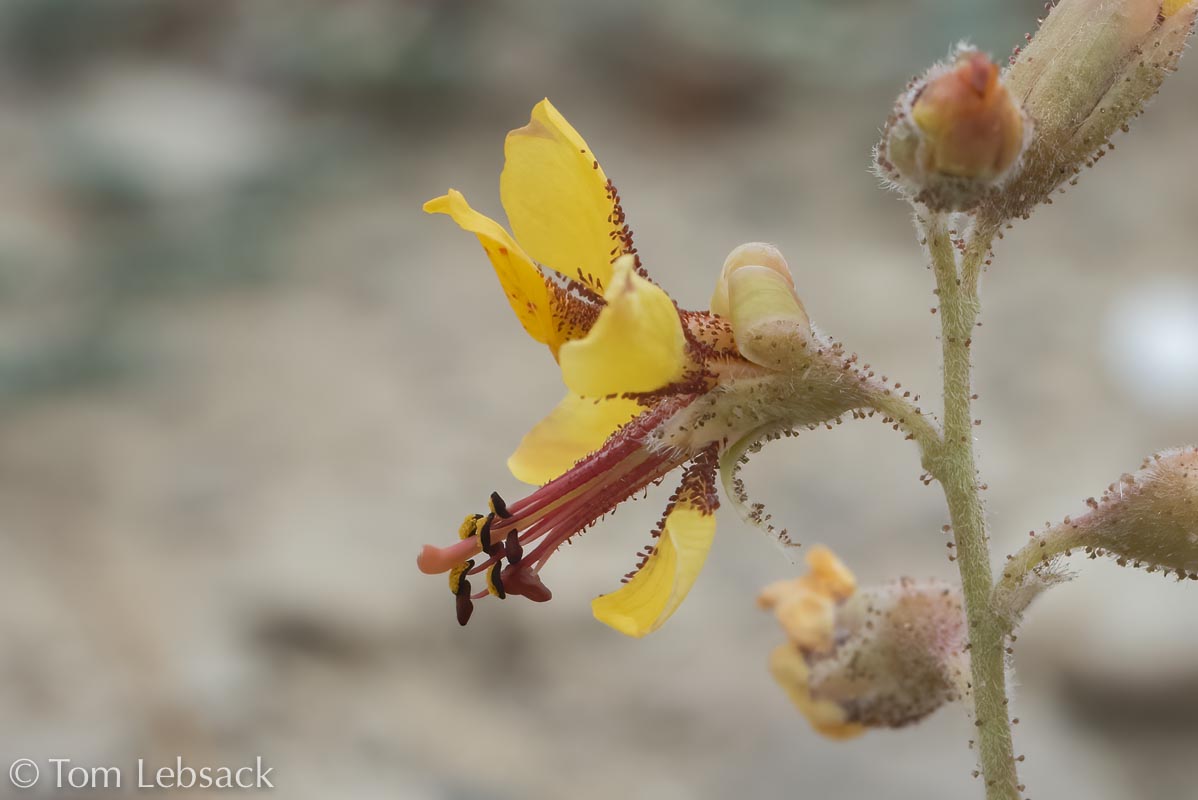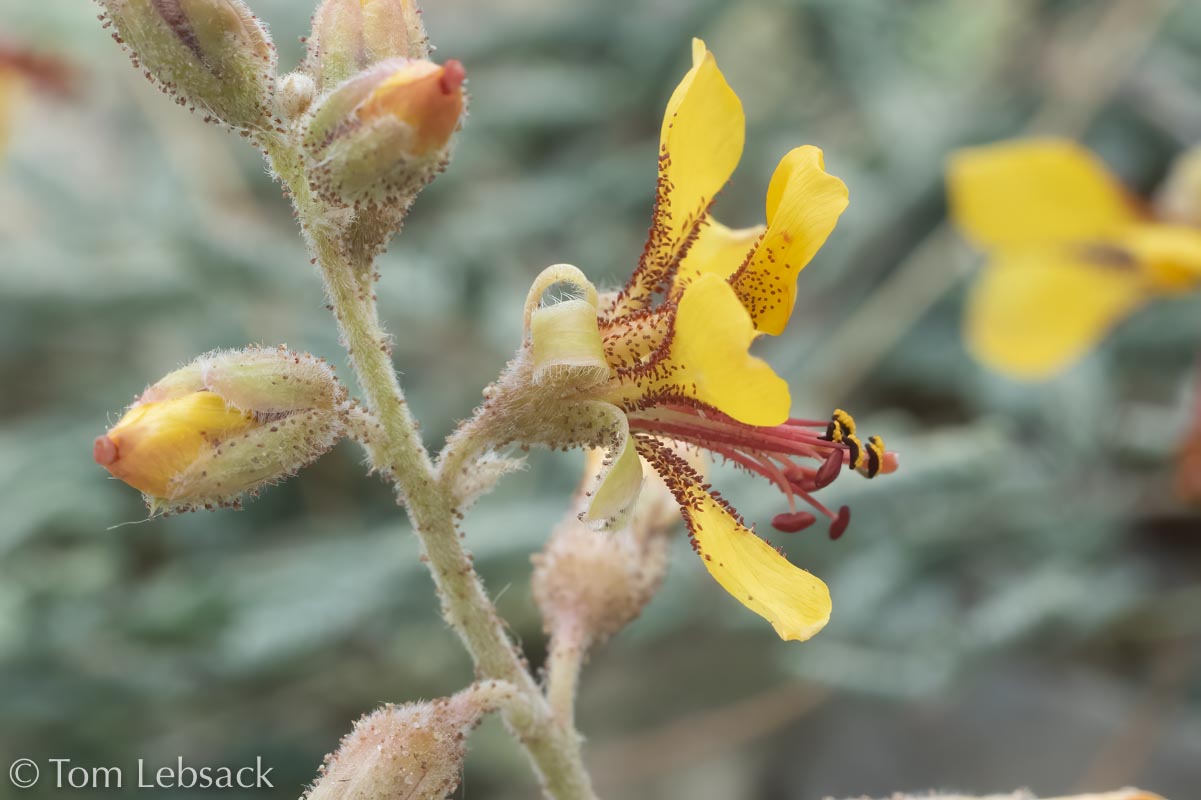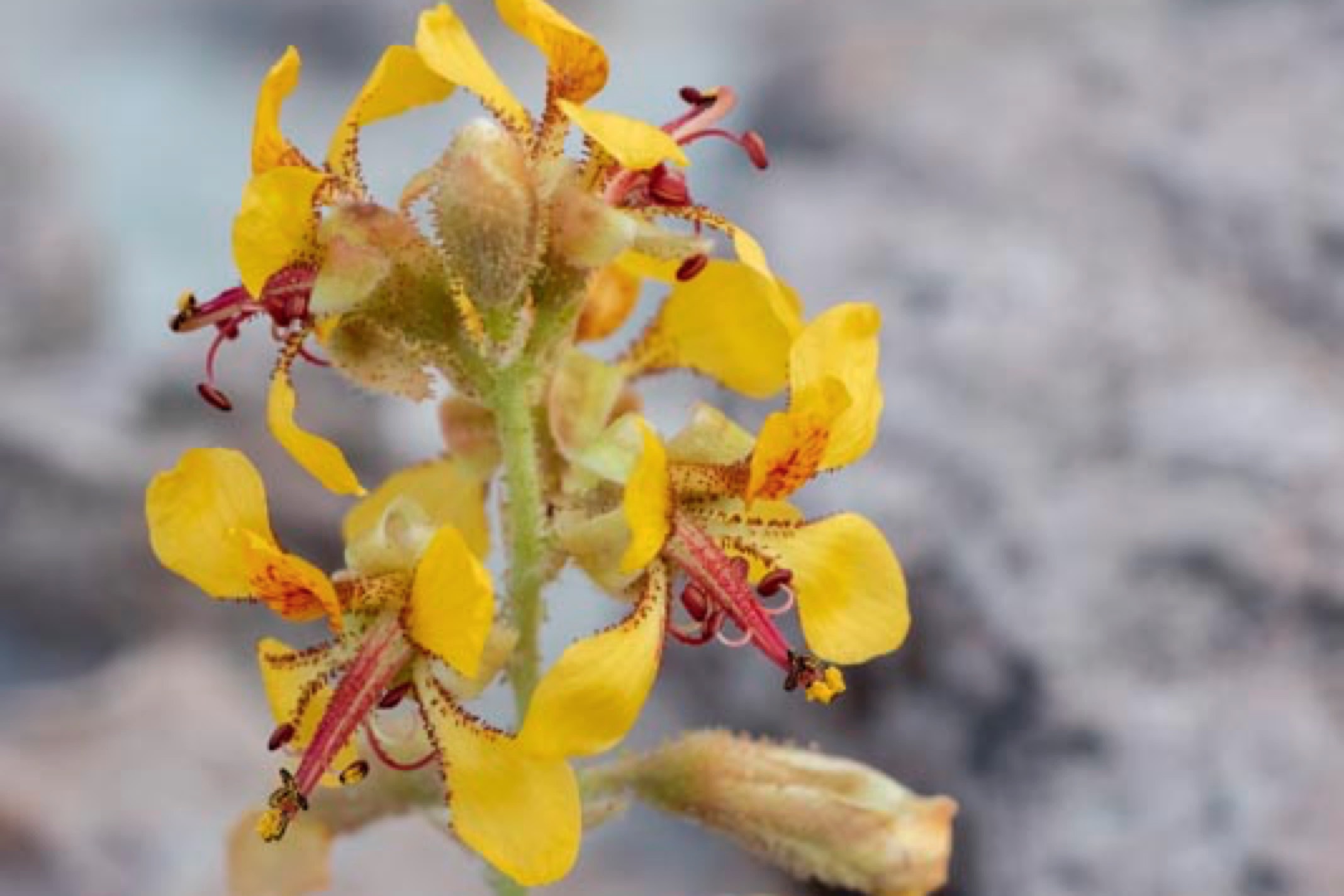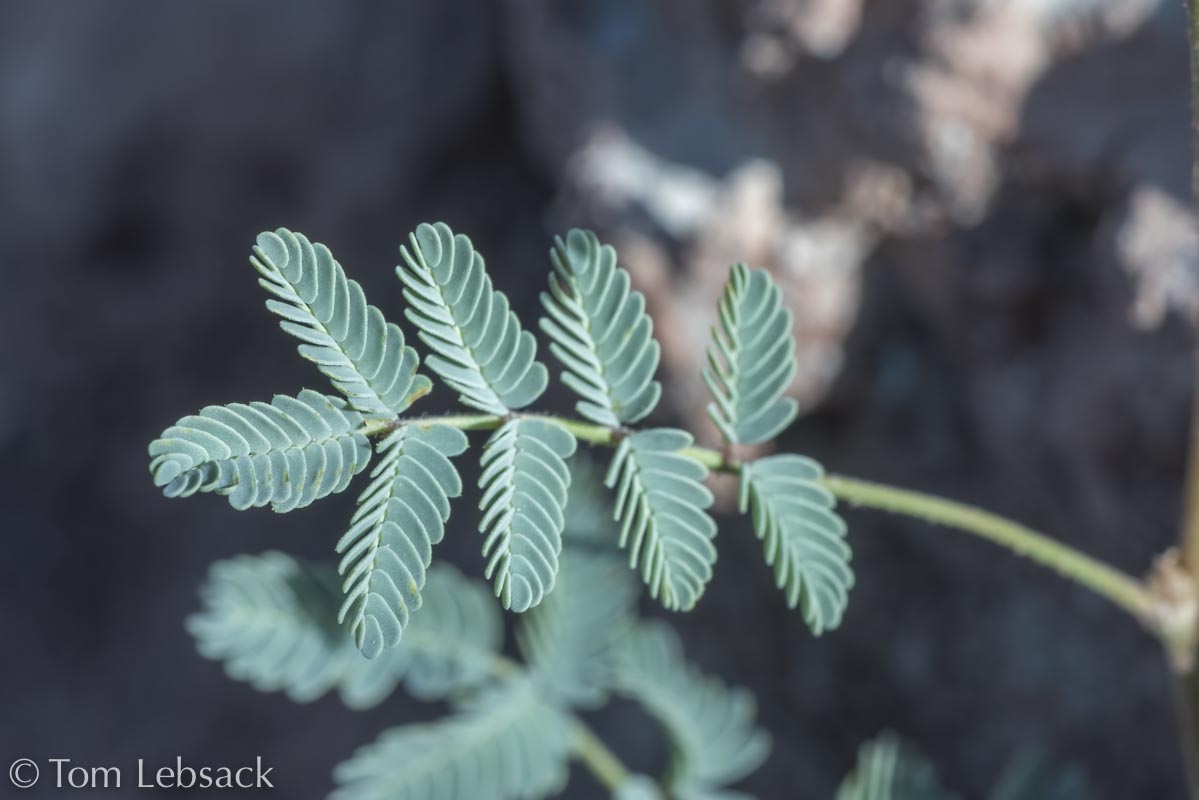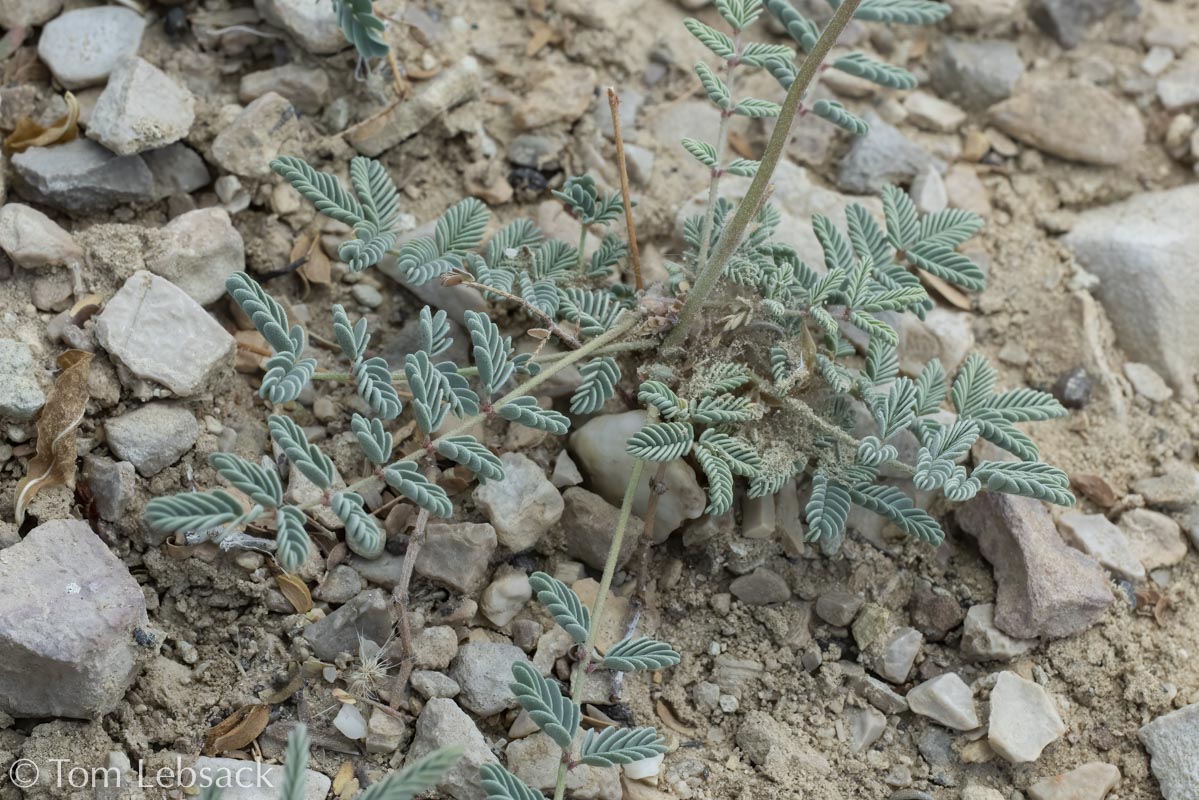Texas Wildbuds
Hoffmannseggia glauca
(Indian Rush-pea)
| Scientific Name | Hoffmannseggia glauca | USDA PLANTS Symbol | HOGL2 |
| Common Name | Indian Rush-pea, Sickle-pod Rush-pea, Hog-potato | ITIS Taxonomic Serial No. | 503048 |
| Family | Fabaceae (Pea) | SEINet Reference |
Click Here |
| Description | Habitat: Sandy and alkaline soils in open areas, disturbed sites, roadsides and edges of cultivated fields. Plant: Erect perennial 6 to 12 inches tall; usually several stems with occasional stalked reddish glands and sparse, short white hairs. Leaves: Bi-pinnately-compound leaves, 2 to 5 inches long divided into 5 to 11 pinnae that are further divided into 5 to 11 pairs of small oblong to ovate leaflets, 1/8 to less than 1/3-inch long; leaflet surfaces are usually smooth; petiole and rachis are glandular. Inflorescence: Terminal racemes of flowers not quite radially symmetric with a gap between the 2 lowest petals; yellow petals fading to reddish, 3/8-inch long, the narrow basal portion lined with red stalked glands; glandular and pubescent stamens shorter than petals; 5 linear to linear-oblong glandular-pubescent sepals about 0.3 inches long. Bloom Period: March to September. Fruit: Sickle-shaped pods 3/4 to 1-5/8 inches long and less than 1/3-inch wide, may be smooth, glandular or pubescent. References: "Manual of the Vascular Plants of Texas" by Correll and Johnston, "Wildflowers of Texas" by Michael Eason and SEINet and Kansas Wildflowers and Grasses. Note: Considered a noxious weed in some states. Named for Johann Centurius von Hoffmannsegg, 1766-1849, Count of Hoffmannsegg, Germany. |
BONAP Distribution Map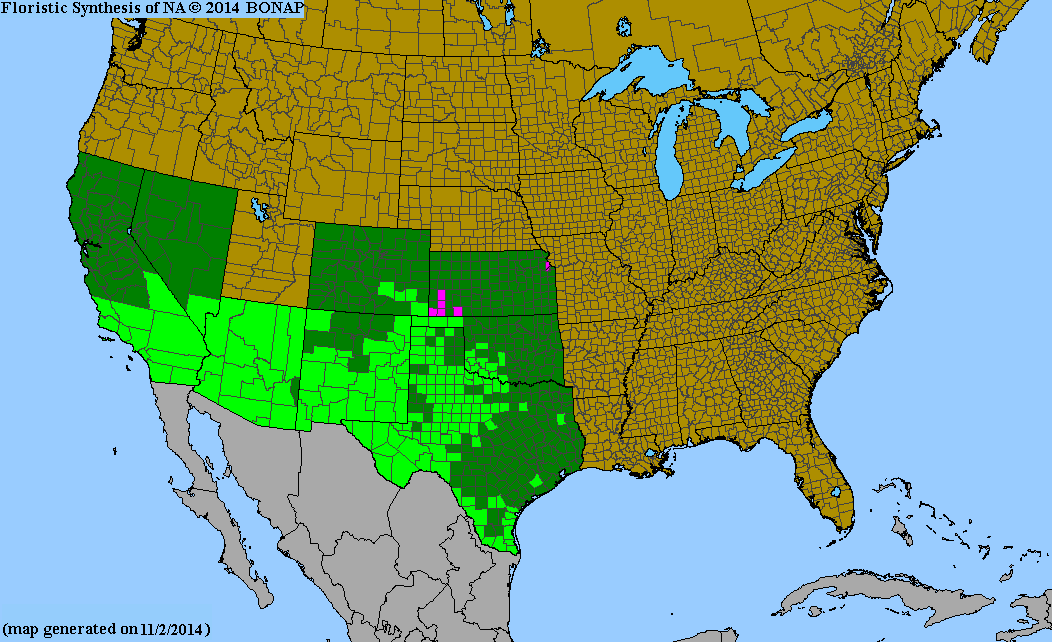 Map Color Key |
Texas Status: Native |
Banner photo of Castilleja indivisa and Lupinus ssp. taken along FM 1323 north of Johnson City, Blanco County
© Tom Lebsack 2025
Every attempt is made to provide accurate, up-to-date, and relevant information, but the completeness or accuracy of any information presented on this website cannot be guaranteed. I use authoritative references to insure high standards of accuracy and review and update the information frequently.
